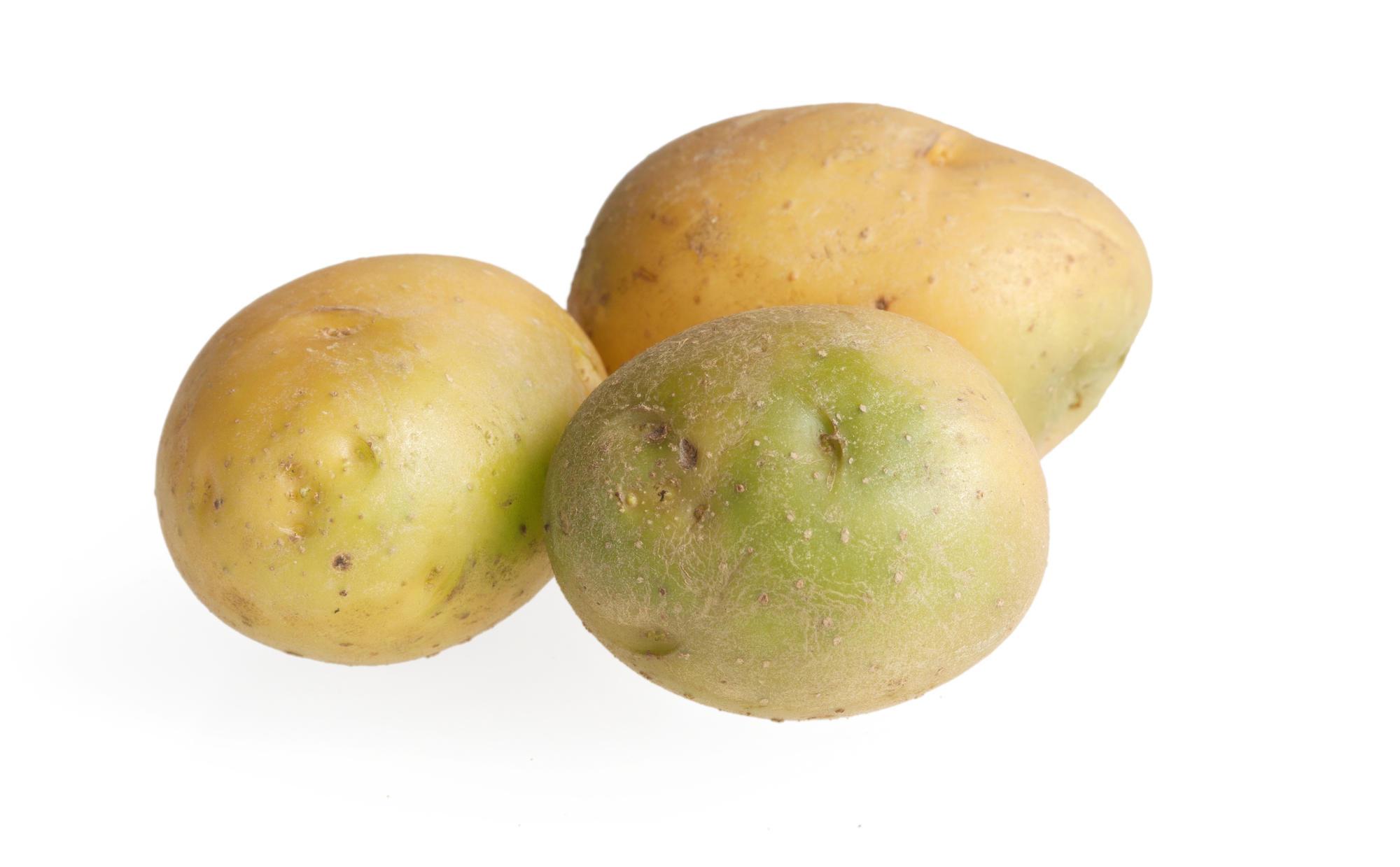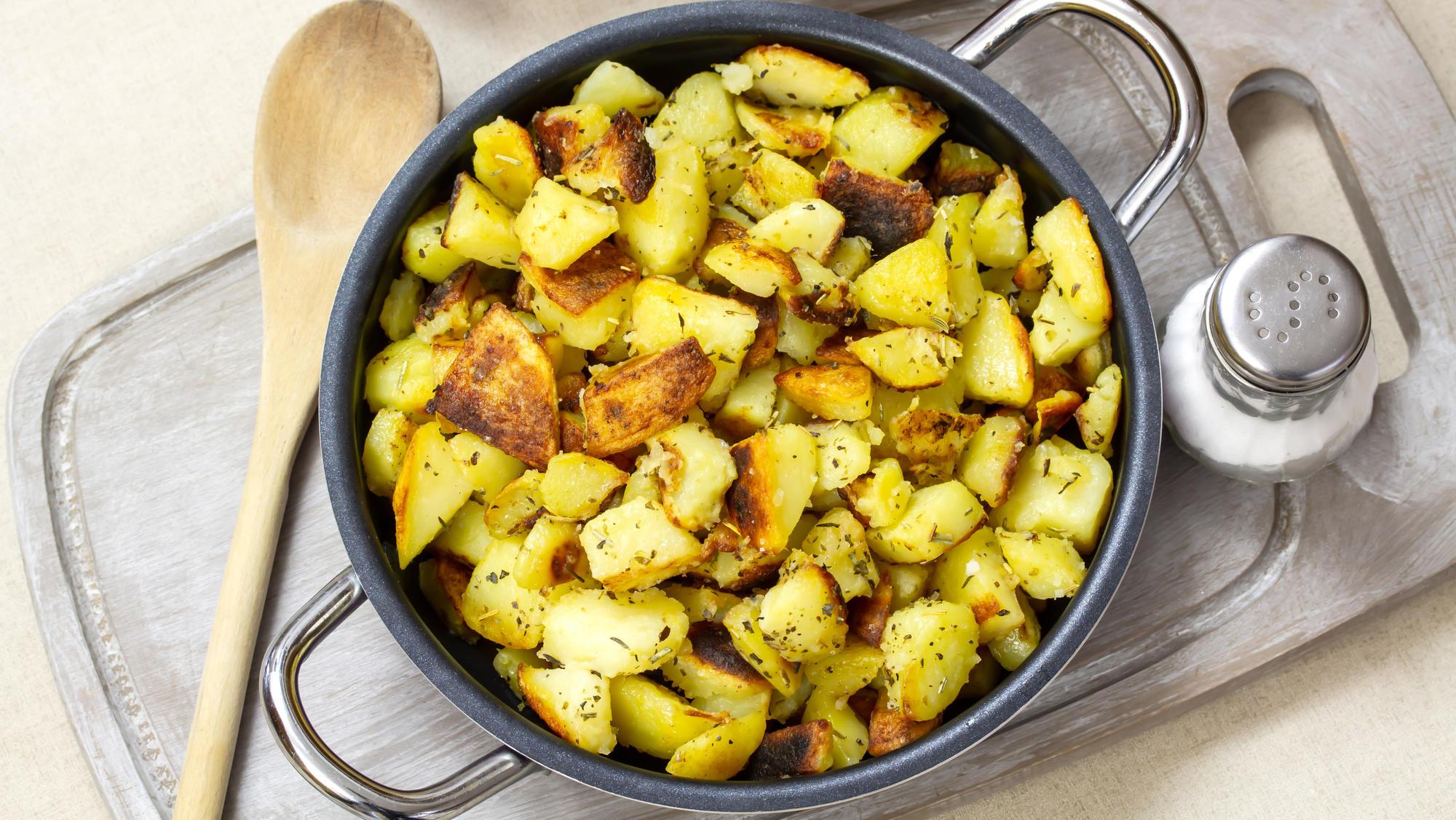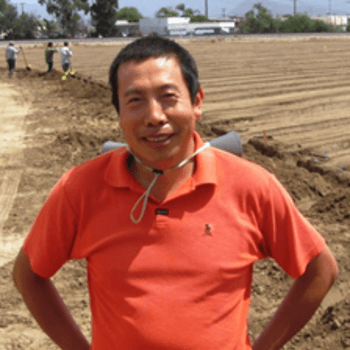What are glycoalkaloids?
Glycoalkaloids are secondary metabolites that are toxic to humans if consumed in high concentrations. However, glycoalkaloids also can inhibit cancer cell growth and may promote cancer cell death.
Plants of the Solanaceae family—such as potatoes (Solanum tuberosum L.), tomatoes (Solanum lycopersicum), eggplant (Solanum melongena) and peppers (Capsicum annum) — produce glycoalkaloids.
Potatoes — part of the diet of about a billion people worldwide — accumulate glycoalkaloids when exposed to light. This can occur when they are set high in the soil during growth or during storage and retail conditions (Figure 1). Tuber greening can occur after being exposed to light. Glycoalkaloids — primarily alpha solanine and alpha chaconine — are produced from cholesterol. Alpha solanine and alpha chaconine account for more than 95% of the total glycoalkaloid content in cultivated potatoes. Alpha chaconine is more toxic than alpha solanine, but the overall toxicity for both depends on their levels and their ratio. Solanine and chaconine are produced in the flowers, young leaves, shoots, tubers and other bioactive parts of the plant to protect it from fungi, phytopathogens, insect pests and herbivores.
What is the concentration of glycoalkaloids in potatoes?
The average glycoalkaloids amount in market potatoes should be less than 200 milligrams per kilogram. Higher concentrations may occur after light exposure. A normal nonilluminated potato tuber contains an average of 12–20 milligrams per kilogram of glycoalkaloids, while a green tuber contains 250–280 milligrams per kilogram. A green tuber skin contains 1,500–2,200 milligrams per kilogram.
A potato peel is rich in protein, free amino acids, free organic acids, phenolic compounds and antioxidant compounds. There is a high concentration of glycoalkaloids in the tuber skin and even higher concentrations around the eyes, injured areas and sprouts. Table 1 shows the glycoalkaloid contents of peel and peeled nonilluminated tubers of three popular potato varieties in the U.S. and illustrates the accumulation of the glycoalkaloids in the peel.
| Cultivar | Glycoalkaloids content (mg/kg)* | |
|---|---|---|
| Peeled tuber (fresh) | Peel | |
| Ranger Russet | 170 | 1,694 |
| Russet Burbank | 290 | 1,570 |
| Russet Norkotah | 94 | 996 |
*Sum of alpha chaconine plus alpha solanine
What are the effects of glycoalkaloids on the human body?
Potato glycoalkaloids are toxic to humans at doses greater than 2 milligrams per kilogram of body weight. Glycoalkaloid levels above 140 milligrams per kilogram result in bitterness, while more than 200 milligrams per kilogram can cause a burning sensation in the throat and mouth.
Glycoalkaloid levels higher than 200 milligrams per kilogram in fresh potatoes are unsafe. The Joint FAO/WHO Expert Committee on Food Additives — an international panel of experts with the Food and Agriculture Organization of the United States (FAO) and the World Health Organization (WHO) — considers a glycoalkaloid level below 100 milligrams per kilogram of fresh potatoes not a concern. Low levels of glycoalkaloids can cause abdominal pain, diarrhea, sweating, bronchospasm, vomiting and other gastrointestinal discomfort. Higher doses of glycoalkaloids lead to acute intoxication. Severe symptoms include neurological disorders, rapid pulse, low blood pressure, coma or death. Glycoalkaloids can remain in the body for more than 24 hours after ingestion.
What factors affect glycoalkaloid content?
Glycoalkaloid production in potatoes occurs during farming operations and postharvest handling. Some varieties of potatoes are more susceptible than others, and growing conditions and management play roles. Hilling potato rows to prevent tuber light exposure is especially important. Storage, transportation, temperature, humidity, cutting, sprouting and exposure to phytopathogens and light are also factors.
Before planting and during the growing season
Glycoalkaloid levels are genetically controlled. Growing conditions influence those levels. Potato breeders monitor the accumulation of glycoalkaloids in promising breeding clones before releasing new varieties. Figure 2 shows the trend of glycoalkaloid contents in three common varieties, Ranger Russet, Russet Burbank and Russet Norkotah, grown from 1998 to 2020 in Aberdeen, Idaho.
Soil type and coverage
The effect of soil type on glycoalkaloid content is unknown, but it seems there is no relationship. In 1974, researchers noted higher glycoalkaloid levels in heavier soil types but could not provide definitive evidence that soil type affects glycoalkaloid synthesis. Potatoes with minimal soil cover during the growing season tend to have higher concentrations of glycoalkaloids than those planted deeply and kept well-covered. Good hilling of potato rows ensures tubers are not exposed to light.
Fertilizers
Researchers report conflicting correlations between nutrient levels and glycoalkaloid content. A 1975 study found that glycoalkaloid content decreased with increasing nitrogen fertilization, but the previous year a different research team found an increase. The 1974 researchers found that the response of tubers to nitrogen fertilization depended on the variety. In another study, nitrogen fertilization at 224 kilograms per hectare resulted in tubers containing the highest concentrations of glycoalkaloids and nitrate nitrogen. Researchers in 1979 found glycoalkaloid decreased when they increased the plants’ potassium.
Climate
Environmental factors that delay maturity or shorten the growing season can increase glycoalkaloid levels. Researchers in 1984 and in 1993 concluded that glycoalkaloid production increases when potato plants are stressed by prolonged cold temperatures, drought and too much or too little sunshine. Glycoalkaloid levels increase with excess water at low temperatures in later development stages. In controlled growing environments, glycoalkaloid content increased under heat stress in a 1999 study.
Post-harvest
Immature tubers contain more glycoalkaloids than fully mature tubers. Moreover, immature tubers produce higher levels of glycoalkaloids when exposed to light than mature tubers. Most tuber varieties mature in 118 days. Smaller tubers have higher glycoalkaloid content than larger ones because glycoalkaloids concentrate in the skin and small tubers have a higher proportion of peel than large ones.
After harvesting, the glycoalkaloid content may increase during storage and transportation. This increase is due to light, heat, cutting, injury, slicing, sprouting and exposure to phytopathogens during postharvest handling and storage.
Light
According to one 2002 study, light and mechanical damage were the most important stress agents in the synthesis of glycoalkaloids in potato tubers after harvesting. Light has the greatest effect. Increases in chlorophyll and glycoalkaloid synthesis seem to depend on the wavelength of the light to which the tubers are exposed. Usually, glycoalkaloid synthesis is greater in sprouts under light than in sprouts kept in dark conditions.
Exposure of peeled Russet Burbank potato slices to 200-footcandle fluorescent light for 48 hours increased the glycoalkaloid content from 2 milligrams per kilogram to 74 milligrams per kilogram fresh weight, researchers found. The amount of alpha chaconine in potato samples stored in darkness also increased during storage
Mechanical damage
Mechanical damage, including cutting and slicing of potato tubers, induces the formation of glycoalkaloids. Additionally, bruising and impact damage during harvest and grading may also increase glycoalkaloid levels in tubers.
Storage conditions
Storage time is one of the most significant factors in the glycoalkaloid content of tubers. The longer the storage time, the higher the glycoalkaloid levels. Levels reach a maximum and then begin to decline, researchers say — especially if sprouting occurs. Storage time is closely related to the effects of light and temperature so these factors must be considered in any comparative studies. In one study, potatoes stored for three days at room temperature (22°C, or 72° Fahrenheit) increased alpha-chaconine levels by 62%. When stored for 16 days, levels increased by 300%. Storage temperature affects germination, respiratory rate, disease control, sweetening and the development of internal and external black spots. It also affects the accumulation rate of total glycoalkaloid in response to light exposure. A 1984 study found that tubers stored at 1°C (34°F) were lower in glycoalkaloid than those stored at 20°C (68°F). Potatoes should be stored at a 5°C (41°F) to 8°C (46°F) and relative humidity of greater than 90%. If storage temperatures are above 8°C, the potatoes will start to sprout after two or three months, which can increase glycoalkaloids contents. Since humidity could influence glycoalkaloid formation during storage, a need exists to define the combined effects of storage temperature and humidity on changes in glycoalkaloid levels of potatoes.
How to reduce glycoalkaloid content in storage
If the potatoes need to be stored for a long period of time, various studies suggest growers minimize wounding and greening before storage and store them in the dark at 5°C–8°C (41°F–46°F) to prevent sprouting and increasing glycoalkaloids. Under these circumstances, the glycoalkaloid content did not increase, and sprouts did not grow during the six-month storage period.
Does cooking reduce glycoalkaloid content?
Cooking has variable effects. Glycoalkaloids are heat stable. Alpha-solanine breaks down in temperatures between 260°C and 270°C (500°F to 518°F). Boiling and microwaving have a negligible effect on content, although boiling peeled potatoes results in a reduction of about 39%, researchers concluded in 2006. As a result, frying could be the most effective method of reducing glycoalkaloid levels. Generally, frying at 150°C–180°C (318°F–176°F) caused little change, but frying at 210°C (410°F) resulted in a 40% loss of glycoalkaloid.
Summary: Reducing glycoalkaloids
- Researchers should develop new cultivars that show the greatest resistance to greening, bruising and postharvest glycoalkaloid production. Cultivars most susceptible to mechanical injury show the greatest increases in glycoalkaloid content.
- Best management practices during the growing season (for example, irrigation, nutrient management, pathogen and pest and weed control) will reduce environmental stresses and reduce postharvest glycoalkaloid accumulation. Potato producers should maintain adequate soil cover above potato tubers and maintain sufficient hills to reduce light exposure and associated increases in glycoalkaloids.
- Inappropriate postharvest handling of potatoes, especially during storage, increases glycoalkaloid content. Storing in the dark at 5–8°C (41°F–46°F) is suitable for potatoes.
- Potatoes exposed to sunlight in the farmers markets increase glycoalkaloid content. Potatoes should be protected from light exposure as much as possible. Packing the potatoes with materials to protect them from light, treating them with chemicals to delay sprouting and storing them in a controlled atmosphere can prevent chlorophyll synthesis and sprouting, with associated glycoalkaloid increases.
- The potato peel, which comprises 2% to 3% of the tuber weight, contains 30–60 milligrams of glycoalkaloids. Peeling slightly green potatoes reduces the glycoalkaloids content to a safer level, especially in smaller, immature tubers that contain larger amounts of these compounds. Potatoes with pronounced greening or damage must not be eaten.
- Some households place potatoes in water to reduce browning after peeling. Immersion of potatoes in water may also reduce glycoalkaloid formation. Little is known about the effects of soaking or spraying with water.
- Injury such as slicing (widely used in the home) induces a burst of glycoalkaloids synthesis over time. Keep the tubers whole until just before cooking. Peeling increases glycoalkaloid content and should be done shortly before cooking.
References
Ahmed, S.S. and K. Müller. 1979. Seasonal changes and the effect of nitrogen‐and potash‐fertilization on the solanine and α‐chaconine content in various parts of the potato plant. Zeitschrift für Pflanzenernährung und Bodenkunde, 142(2), pp.275-279.
Burton, W.G. 1989. Post-harvest physiology. The potato. Harlow: Longman Scientific and Technical, pp.423-522.
Chungcharoen, A., 1988. Glycoalkaloid content of potatoes grown under controlled environments and stability of glycoalkaloids during processing. Ph. D. Thesis, University of Wisconsin, Madison, Wisconsin.
Cronk, T.C., G.D. Kuhn and F.J. McArdle. 1974. The influence of stage of maturity, level of nitrogen fertilization and storage on the concentration of solanine in tubers of three potato cultivars. Bulletin of Environmental Contamination and Toxicology, 11(2), pp.163-168.
Dale, M.F.B. and G.R. Mackay. 1994. Inheritance of table and processing quality. Potato Genetics, pp.285-315.
Dao, L. and M. Friedman.1994.Chlorophyll, chlorogenic acid, glycoalkaloid and protease inhibitor content of fresh and green potatoes. Journal of Agricultural and Food Chemistry, 42(3), pp.633-639.
Edwards, E.J. and A.H. Cobb. 1996. Improved high-performance liquid chromatographic method for the analysis of potato (Solanum tuberosum) glycoalkaloids. Journal of Agricultural and Food Chemistry, 44(9), pp.2705-2709.
Fitzpatrick, T.J., S.F. Herb, S.F. Osman, J.A. McDermott and Eastern Regional Research Center. 1977. Potato glycoalkaloids: increases and variations of ratios in aged slices over prolonged storage. American Potato Journal, 54, pp.539-544.
Friedman, M. 2015. Chemistry and anticarcinogenic mechanisms of glycoalkaloids produced by eggplants, potatoes and tomatoes. Journal of Agricultural and Food Chemistry, 63(13), pp.3323-3337.
Friedman, M. and G.M. McDonald. 1999. Postharvest changes in glycoalkaloid content of potatoes. Impact of Processing on Food Safety, pp.121-143.
Griffiths, D.W., H. Bain and M.F.B. Dale. 1998. Effect of storage temperature on potato (Solanum tuberosum L.) tuber glycoalkaloid content and the subsequent accumulation of glycoalkaloids and chlorophyll in response to light exposure. Journal of Agricultural and Food Chemistry, 46(12), pp.5262-5268.
Hwang, C.S. and S.W. Lee. 1984. Glycoalkaloid content as influenced by varieties, parts and weight of potatoes. Korean Journal of Food Science and Technology, 16(4), pp.383-387.
Kirui, G.K. 2002. Glycoalkaloid content of some potato (Solanum tuberosum L) varieties grown in Kenya as influenced by light and different storage conditions. M.Sc. Thesis, in Plant Biochemistry and Physiology, University of Nairobi.
Kozukue, N. and S. Mizuno. 1989. Studies on glycoalkaloids of potatoes (Part IV) changes of glycoalkaloid content in four parts of a sprouted potato tuber and in potato tubers during storage. Journal of the Japanese Society for Horticultural Science, 58(1), pp.231-235.
Love, S.L., T.J. Herrman, A. Thompsonjohns, and T.P. Baker. 1994. Effect and interaction of crop management factors on the glycoalkaloid concentration of potato tubers. Potato Research, 37, pp.77-85.
Mensinga, T.T., A.J. Sips, C.J. Rompelberg, K. van Twillert, J. Meulenbelt, H.J. van den Top and H.P. van Egmond. 2005. Potato glycoalkaloids and adverse effects in humans: an ascending dose study. Regulatory Toxicology and Pharmacology, 41(1), pp.66-72.
Mondy, N.I. and S. Chandra. 1979. Reduction of Glycoalkaloid Synthesis in Potato Slices by Water Soaking. HortScience, 14(2), pp.173-174.
Nitithamyong, A., J.H. Vonelbe, R.M. Wheeler, and T.W. Tibbitts. 1999. Glycoalkaloids in potato tubers grown under controlled environments. American Journal of Potato Research, 76(6), pp.337-343.
Nowacki, E., M. Jurzysta and P. Gorski. 1975. Effect of availability of nitrogen on alkaloid synthesis in Solanaceae. Bulletin. Serie des Sciences Biologiques.
Olsson, K. and C. Carlsson. 1993. Do wet field conditions influence glycoalkaloids in potatoes. In 12th Triennial Conference of EAPR, European Association for Potato Research, Paris, pp 192ą193.
Omayio, D.G., G.O. Abong and M.W. Okoth. 2016. A review of occurrence of glycoalkaloids in potato and potato products. Current Research in Nutrition and Food Science.
Pęksa, A., G. Gołubowska, K. Aniołowski, G. Lisińska and E. Rytel. 2006. Changes of glycoalkaloids and nitrate contents in potatoes during chip processing. Food Chemistry, 97(1), pp.151-156.
Pȩksa, A., G. Gołubowska, E. Rytel, G. Lisińska and K. Aniołowski. 2002. Influence of harvest date on glycoalkaloid contents of three potato varieties. Food Chemistry, 78(3), pp.313-317.
Salunkhe, D.K., M.T. Wu and S.J. Jadhav. 1972. Effects of light and temperature on the formation of solanine in potato slices. Journal of Food Science.
Şengül, M., F. Keleş and M.S. Keleş. 2004. The effect of storage conditions (temperature, light, time) and variety on the glycoalkaloid content of potato tubers and sprouts. Food Control, 15(4), pp.281-286.
Shaw, I. 2005. Is it Safe to Eat? (pp. 227-236). Springer Berlin Heidelberg.
Sinden, S.L. and R.E. Webb. 1974. Effect of environment on glycoalkaloid content of six potato varieties at 39 locations (No. 1472). Agricultural Research Service, U.S. Department of Agriculture.
Smith, D.B., J.G. Roddick and J.L. Jones. 1996. Potato glycoalkaloids: some unanswered questions. Trends in Food Science & Technology, 7(4), pp.126-131.
Takagi, K., M. Toyoda, Y. Fujiyama and Y. Saito. 1990. Effect of cooking on the contents of α-chaconine and α-solanine in potatoes. Food Hygiene and Safety Science (Shokuhin Eiseigaku Zasshi), 31(1), pp.67-73_1.
USDA. 2020. Statistical bulletins. Washington, D.C.: National Agricultural Statistics Service, USDA-NASS.
Valcarcel, J., K. Reilly, M. Gaffney and N. O'Brien. 2014. Effect of genotype and environment on the glycoalkaloid content of rare, heritage, and commercial potato varieties. Journal of Food Science, 79(5), pp.T1039-T1048.
Yaniv, Z., D. Palevitch, M. Weissenberg. 1984. The effect of water stress on growth and solasodine content in Solanum khasianum. Planta Medica, 50(01), pp.60-65.








